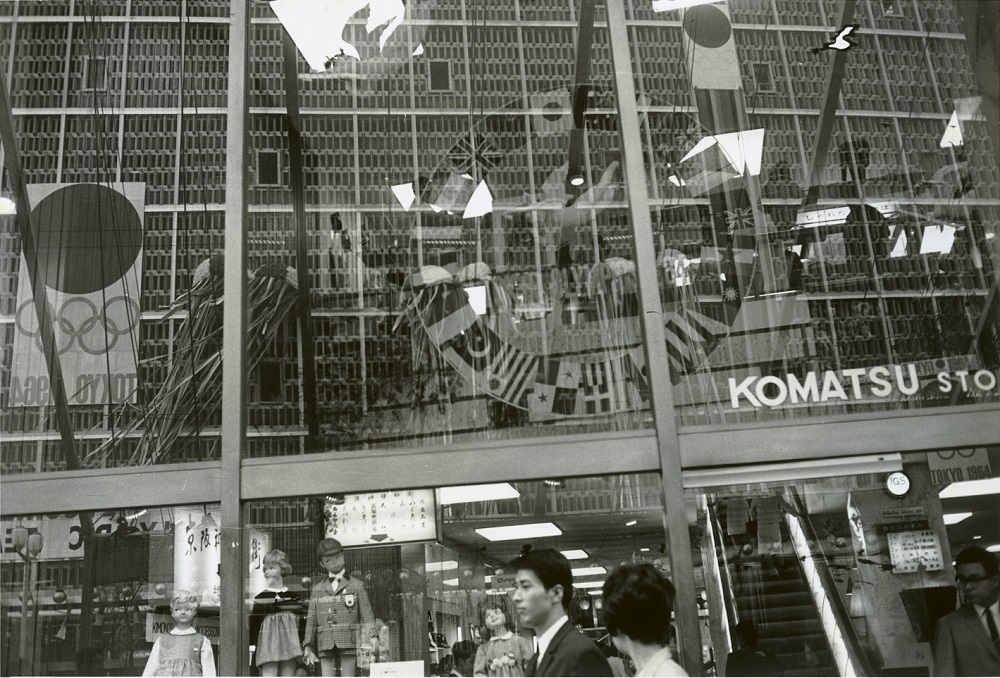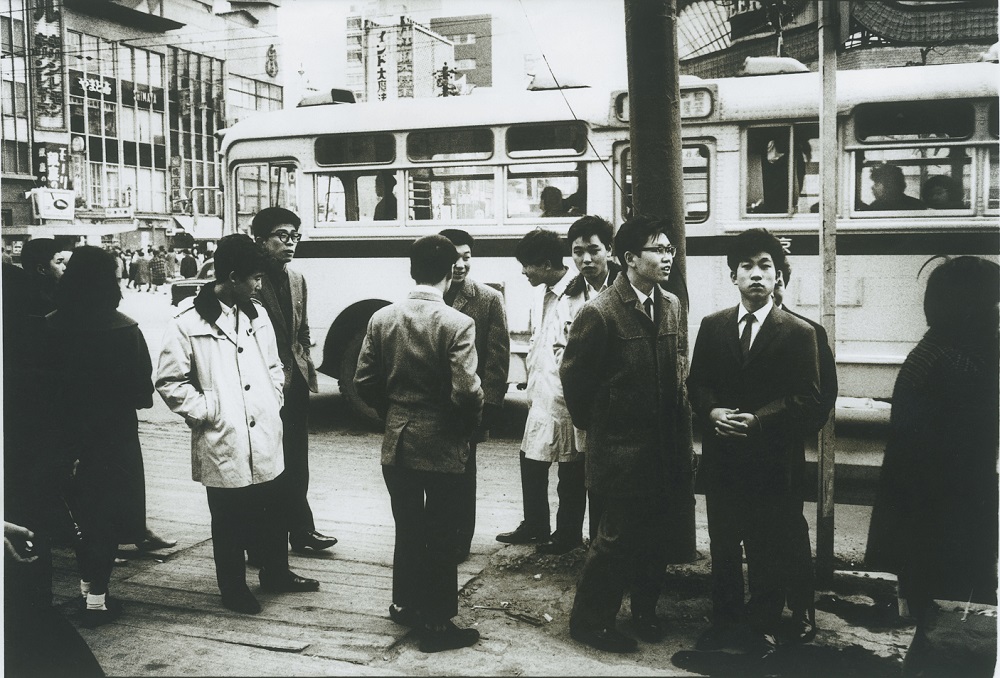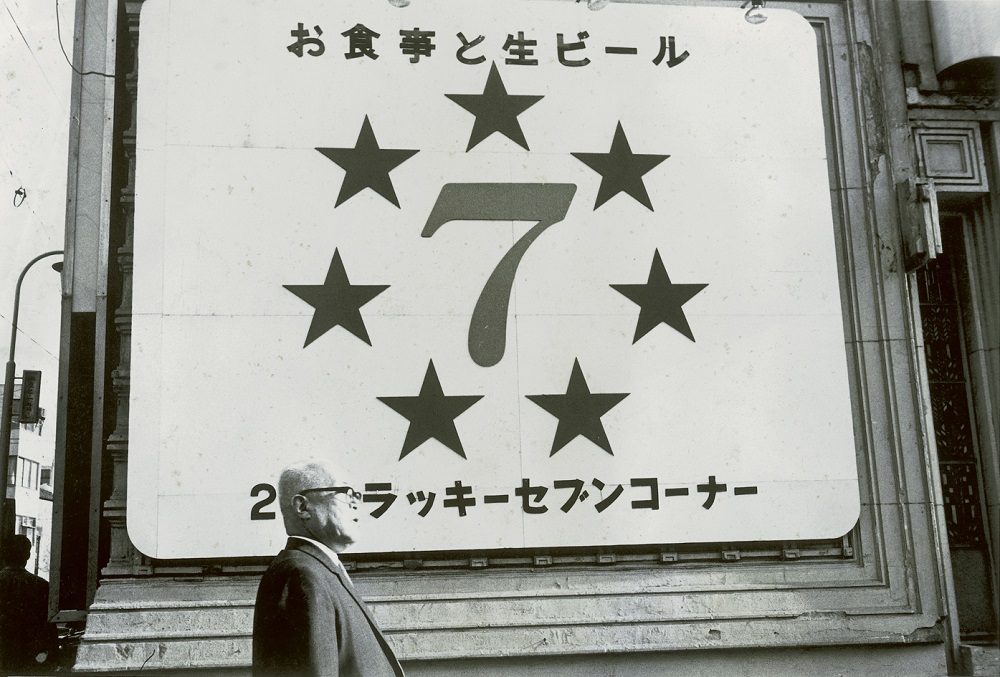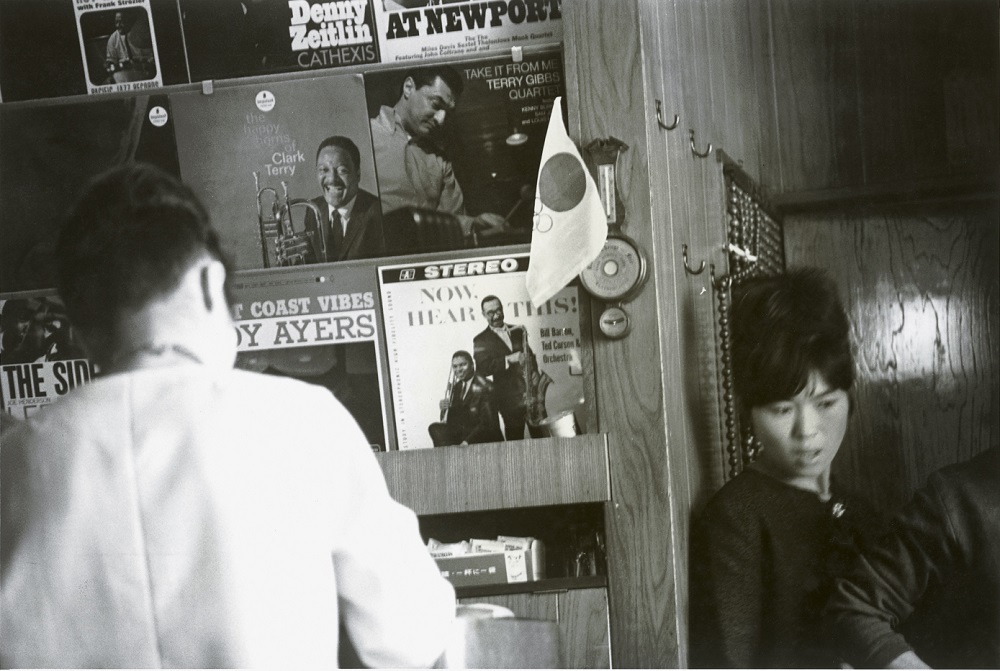An Exploration of Modern Ginza
An Exploration of Modern Ginza — VII. The hydrangeas of Ginza
2021.04.20
Photography by Ko Ito
Words & Illustrations by Yoshiyuki Morioka
The Summer/Autumn 2020 issue of Hanatsubaki included an essay by Yoshiyuki Morioka, the owner of Ginza’s Morioka Shoten bookstore, on the relationship between Ginza and Shiseido. In this online column, Morioka ties together the past, present, and future of the district through reference to various books and events.
Ginza has always been a stomping ground for iconic figures of the day, and all the excitement and drama that it has seen can be felt in the air even today. So join us on an imaginary walk around Ginza, guided along by the photographs of Ko Ito, a photographer who was taking snapshots of the district around 1964.

VII. The hydrangeas of Ginza
Every year when the rainy season arrives, it strikes me how many hydrangeas can be seen around Ginza. So on July 1, 2020, we conducted an all-out operation to count the number of hydrangeas in the area.
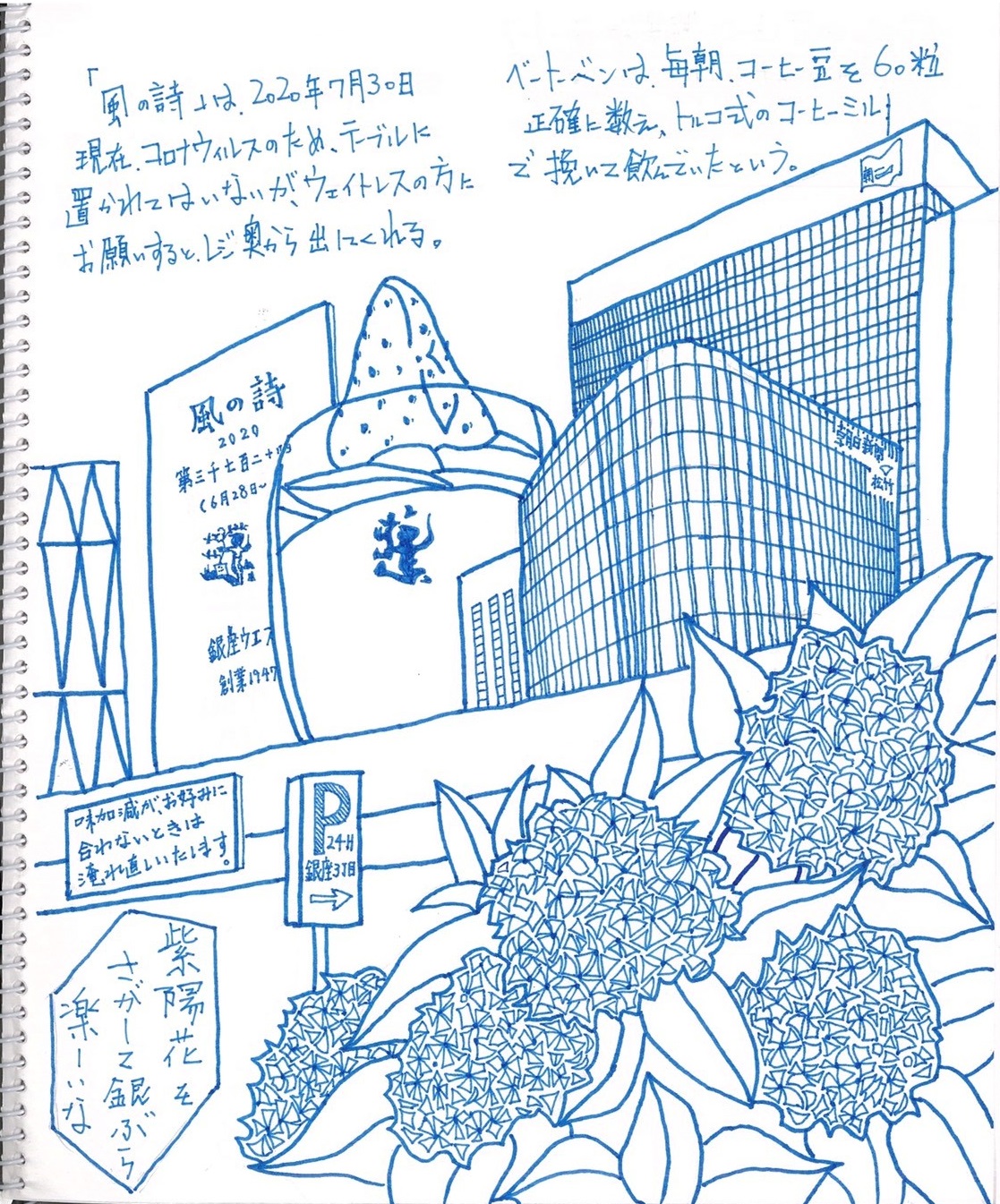
The operation was assisted by painter Atsuko Asahina and designer Shuko Ozawa. We first convened at Morioka Shoten to work out who would count which areas. It was decided that I would cover Ginza 1-chome to 3-chome, Asahina-san Ginza 4-chome to 6-chome, and Ozawa-san Ginza 7-chome and 8-chome. We would post our counts as we went along in the group chat we’d set up on the LINE messaging app; we were to count the number of hydrangea plants rather than flowerheads. Asahina-san had a little proposition to make: “I happen to be a big Bruckner fan*1—what do you say we all listen to his Symphony No. 5 while we’re carrying out the survey?” Her idea was taken on board, and we each set out from Morioka Shoten, vowing to do ourselves proud.
A little later, we received word from Asahina-san:
“I’m in Ginza 4-chome right now on Chuo Street, haven’t seen any hydrangeas around… Are you sure we got this right?”
“Asahina-san, please look high and low! Every nook and cranny!” I asserted.
“Aye aye, captain,” came the reply.
Next, a message from Ozawa-san:
“I’m on Showa Street now, on the Ginza 7-chome footbridge. I can see lots of hydrangeas from here.”
“Woo-hoo!” I replied. “Please go ahead with the count, Ozawa-san!”
I myself messaged the team a while later, in a fit of excitement:
“I’m in Ginza 3-chome in front of Uniqlo on Sotobori Street. The hydrangeas here are huge, this is amazing!”
I took a photo of the hydrangeas and shared it with the others.
From that point on, reports from Asahina-san and Ozawa-san began to pour in. So there were plenty of hydrangeas in Ginza after all.
An hour and a half had passed since the start of our mission, and Bruckner’s Fifth had already sounded its last. The three of us reconvened at our agreed meeting point: the Ginza West parlor in 7-chome.*2 Our table happened to be by the bust of Beethoven. We called the waitress, ordered the cake and coffee set menu, then it was finally time to announce the final tally of Ginza’s hydrangeas, which was as follows: (Cue drum roll)
Sotobori Street, 8-chome: 11 plants
Sotobori Street, 7-chome: 12 plants
Sotobori Street, 6-chome: 18 plants
Sotobori Street, 5-chome: 24 plants
Sotobori Street, 4-chome: 0 plants
Sotobori Street, 3-chome: 2 plants (large)
Sotobori Street, 2-chome: 10 plants
Sotobori Street, 1-chome: 2 plants
Namiki Street, 1-chome: 9 plants
Namiki Street, 2-chome: 16 plants
Namiki Street, 3-chome: 22 plants
Namiki Street, 4-chome: 15 plants
Hanatsubaki Street (West): 4 plants
Kojunsha Street (West): 26 plants
Marronnier Street (East): 3 plants
Matsuya Street (East): 6 plants
Yanagi Street (East): 24 plants
Showa Street, 1-chome (East): 9 plants
Showa Street, 2-chome (East): 3 plants
Showa Street, 3-chome (East): 4 plants
Showa Street, 4-chome (East): 1 plant
Showa Street, 5-chome (East): 3 plants
Showa Street, 6-chome (East): 7 plants
Showa Street, 7-chome (East): 3 plants
Showa Street, 8-chome (East): 2 plants
Showa Street, 8-chome (West): 3 plants
Showa Street, 7-chome (West): 7 plants
Showa Street, 6-chome (West): 5 plants
Showa Street, 5-chome (West): 4 plants
Showa Street, 4-chome (West): 3 plants
Showa Street, 3-chome (West): 6 plants
Showa Street, 2-chome (West): 4 plants
Showa Street, 1-chome (West): 5 plants
“Altogether, there were 273 hydrangeas in Ginza!”
“Wow!”
“Huzzah!”
There was a collective round of modest applause.
“I guess there was someone at some point,” said Asahina-san calmly,
“who had the idea of filling the area with hydrangeas.”
“There are more of them on the fringes of Ginza,” Ozawa-san pointed out, “than in the center—that’s why they aren’t that conspicuous. By the way, what do hydrangeas signify in the floral language?”
I looked it up and informed the others: “The most common meaning seems to be ‘fickleness,’ but it can also mean ‘family gathering.’ I guess you do find both of those in Ginza.”
Our desserts arrived: a cream puff for Asahina-san, shortcake for Ozawa-san, and a savarin cake for yours truly. As we were about to dig in, Asahina-san said to us: “Bruckner famously loved counting things, and he’d even count the leaves hanging on a tree on the roadside. If he were alive and in Ginza today, he might have counted the hydrangeas, just like we did.”
2. Established in 1947, Confectionery West Ginza Parlor or “Ginza West” is a confectioner and café that is much loved by customers of all ages, not only for its delicious treats but for its classy yet cozy atmosphere. 7-3-6 Ginza, Chuo-ku
Contributors
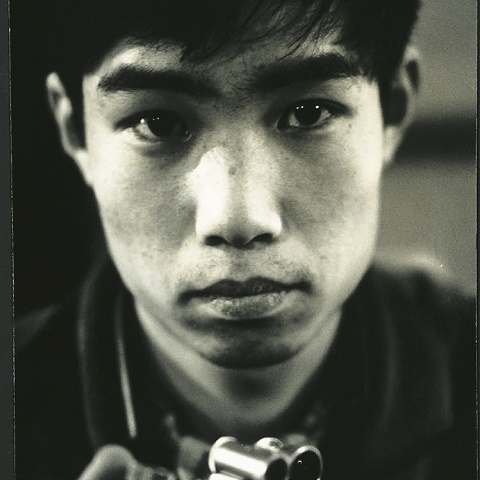
KO ITO
Photographer
Born 1943 in wartime Osaka, Ito was shortly evacuated with his parents to his father’s family home in Wakuya, Miyagi Prefecture. In his sixth year of elementary school, he transferred to a school in Uzumasa, Kyoto, moving there on his own. In 1955 he enrolled at Meiji Gakuin Junior High School in Tokyo, then went on to study at the Tokyo College of Photography from 1961, later joining its teaching department after his graduation in 1963. He held two photography exhibitions during this time. After leaving his post at the school in 1968, he became a freelance photographer. Moving to Mashiko in 1978 to train at the Tsukamoto Seito-jo pottery, he would establish his own kiln in 1981 and produce pottery for the rest of his life. He passed away in 2015.
A collection of Ito’s photography, GINZA TOKYO 1964, was published by Morioka Shoten on May 5, 2020.
https://soken.moriokashoten.com/items/2dabee933141
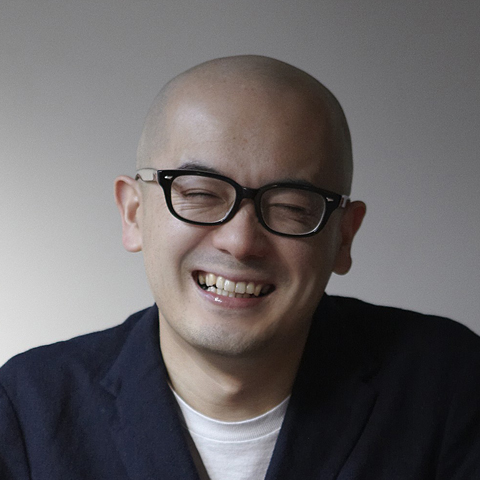
YOSHIYUKI MORIOKA
Bookstore owner
Yoshiyuki Morioka (b. 1974, Yamagata Prefecture) is the owner-director of Morioka Shoten. His publications include Koya no Furuhonya ("The Used Bookstore of the Steppes"; pub. Shobunsha) and BOOKS ON JAPAN 1931–1972 (pub. BNN). He has been involved in exhibitions such as KOGEI to live together (Shiseido Gallery) and Ikei to Kogei ("Reverence and Craftwork"; Yamagata Biennale). In recent years, he has often worked as a producer and promoter of clothing labels. He writes the column "Morioka Shoten Diaries" on the website of Kogei Seika, an art magazine published by Shinchosha.



